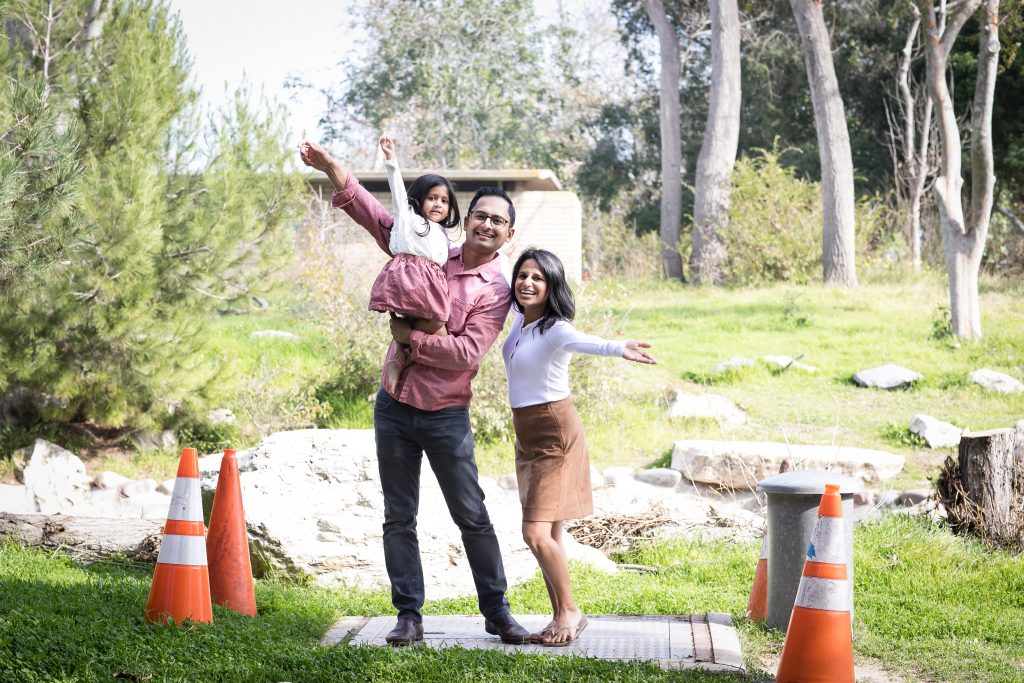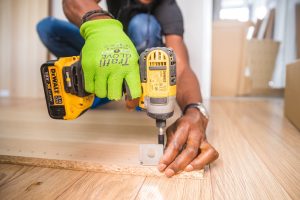A few days ago, we shared part 1 of this series. Now it’s time for part 2. In trying times, it’s important for each of us to do our part to keep ourselves and others safe. My husband is a physician and he wrote out a list of helpful precautions to help us and our families avoid being infected by the novel coronavirus. I asked him to share his thoughts with all of you in hopes that it will be helpful.
I’m writing to share my latest thoughts on how to minimize the risk of exposing oneself and one’s family to COVID-19, particularly for people with high risk jobs and/or highly vulnerable family members. Recent suggests that the novel coronavirus is more transmissible through the air than we previously thought. I’m still not sure if it is technically airborne or just spread through droplets (and there are probably various gradations in between for which we don’t have terms). We used to think it was mainly spread by infected surfaces/dirty hands and droplets dispersed when an infected person coughs. Now we know that the virus can also spread by simply talking and that it can remain in the air for some time (especially indoors). Hence the CDC is now recommending and some mayors are requiring people to wear face coverings (even bandanas or scarves) every time they go out in public. The hope is that it will reduce the spread of virus from you to others (if you are an asymptomatic carrier) and also reduce your risk of getting the virus from an infected stranger. . . just make sure to wash that scarf often.
The way I’m implementing these new recommendations is to do the following:
When going outside for a run or bike ride:
- I try to avoid outdoor areas with lots of people. I also avoid going within 6 feet of others as well as avoiding the path in which a person was walking for the previous 5 seconds. I’m assuming the wind will disperse any virus that was shed by the person in that 5 seconds.
We are having our groceries delivered. On the rare occasions when I have had to go to a grocery store, I take the following measures:
- I wear a regular mask or other face covering.
- I wipe down the cart handle, even if it has already been wiped by a store employee
- I carry hand sanitizer with me and use it every time I touch anything like the credit card terminal. I try to use touchless payment methods when possible (like Apple Pay or credit card taps, while avoiding letting my phone or card touch the reader).
- Ideally, I would wipe down the packaging of each item I buy since others might have touched it. I’m not doing that, but I do wash my hands after putting away the food. Because most of my food sits for a few days before I consume it, most of the virus particles would likely die off before I touch the packaging again. I believe the latest data suggests that the virus lives for about 3 days on hard/plastic surfaces.
While in the hospital:
- I wear a regular mask most of the time, since I am assuming all patients and hospital staff could be asymptomatic carriers. The only times I take off my mask are to drink water/eat food. Before taking the mask off or putting it back on, I wash my hands with hand sanitizer or soap & water. After taking the mask off, I hang it on a hook to minimize the risk of contaminating it with a dirty desk or other fomite. I sometimes reuse masks, but only after storing them for at least a few days in a clean container (eg. a disposable paper bag or a washable container that is breathable) so that any virus particles that might have accumulated on the mask will die off by the time I need to re-use that same mask again. When I feel that one of my masks has a high exposure potential, I discard it.
- Some physicians stick their N95 masks in a UV oven to sterilize them (since they’re being given 1 per week). Apparently, each UV sterilization only reduces the effectiveness of the mask by 1 or 2% (so it would go from being an N95 mask to an N93 mask). Instead of sterilizing my N95 mask, I protect it by covering it with a regular mask (double-mask) and a face shield when I go into any of the following types of patient rooms:
1) a patient with confirmed COVID-19.
2) a person under investigation (i.e. test result hasn’t come back yet).
3) any patient who is coughing, even if they’ve tested negative for the novel coronavirus. - I assume all surfaces in the hospital are potentially infected, including the floors (which are probably coughed on often). Thus, I have a designated pair of sneakers that I only wear at work. When I get to my car, I take the hospital shoes off and put them in a shoe box in my trunk and then change into my clean sneakers. This minimizes the contamination of my car, garage, etc.
- At the end of the day (right before I leave the hospital), I take off my scrubs and put them in a plastic bag. I then put on a clean pair of scrubs and walk straight to my car (making sure to not sit on any chairs in the hospital before I leave).
- When I get home, I take out my work keys and other items from my pockets and place them in a dedicated drawer that I allow to be “contaminated.” I wipe down my phone, wash my hands, wipe my phone again, take off my “driving home scrubs” and put them in a plastic trash can (which I use as a hamper for soiled scrubs), and then I take a shower before going to any other parts of the house.
What I’ve read about the risk to children:
- Fortunately, it seems that most children are at low risk of getting severely ill from COVID-19 (although they can still get infected and spread it to others). There is some risk for kids under age 5, especially babies. This article goes over much of the data on affected children in China.
Hopefully the numbers they cite are an overestimate since most kids get mild infections and don’t end up getting hospitalized or tested for the virus. Here’s an important snippet from that article:
“Does Covid-19 affect children of different ages differently?
It appears so. The Chinese data suggests that young children, particularly infants, are more vulnerable to Covid-19 than other age groups. While severe or critical illness was reported in one in 10 infants, these rates decreased dramatically as children grew older so that in children aged five years or older, only three or four in 100 developed severe or critical illness.”
Other thoughts:
- I’m not a big fan of using gloves outside the hospital. You can’t easily clean them the way you can wash or sanitize your hands. Also, I think gloves give people a false sense of security when wearing them for more than a few minutes. For example, if you contaminate your gloves by touching a grocery cart, touch your phone with your gloved hand, and then put your phone in your pocket, your phone and the inside of your pocket are now contaminated. Instead, I prefer to use hand sanitizer every time I touch something or use a napkin to open doorknobs (and then discard the napkin). I also use small alcohol swabs to wipe down my phone obsessively.
- If someone is coughing near you and tells you “don’t worry, I tested negative for coronavirus” I’d still assume they could have it. Most of the testing for the virus is by nasal swab, which may have a 15-30% false negative rate. Also, that person who tested negative might have contracted the virus after testing negative. Even if that person just has a common viral cold, it’s important to ensure that he/she doesn’t spread that cold to you because you will then have to assume that you have COVID-19.
- People who get infected with the novel coronavirus tend to have mild symptoms like a dry cough initially (more upper respiratory) for the first week or so. The symptoms can resolve briefly, and then they often come back with a vengeance (probably when it starts affecting the lungs). Some important indications to seek medical treatment (after first calling the hospital/clinic for guidance) include developing shortness of breath or symptoms of dehydration (like dizziness when standing).
Each family needs to assess their own risk level before deciding what precautions make sense. My family wife and daughter moved out of our house on March 24th in anticipation of a surge of patients being admitted to my hospital and to give me time to implement more safeguards at home. After it became likely that the surge would not hit, they moved back home yesterday (April 16) and we are doing some social distancing within the household (including me sleeping in a different bedroom and wearing a mask when playing with my daughter). We’ve taken these extreme measures for the following reasons:
1) My wife is highly vulnerable if she gets COVID-19 (because of her severe asthma)
2) It’s not possible for me to reduce my exposure risk as much as I would like (since I work in a hospital).
3) At first, it didn’t seem feasible for me to socially distance myself from my 4 year-old daughter while living in the same house.
When my wife and daughter moved in with my in-laws on March 24, Anjali’s parents generously agreed to help watch our daughter, Nyla, while Anjali worked remotely in their apartment. We felt lucky to have this option and they only live an hour away. I was visiting them every weekend for the 3.5 weeks we lived apart. During the visits, we stayed outdoors and I tried to stay 6 feet away. Initially, I thought this would be too hard on Nyla (she’s almost 4 years-old), but we decided it’s better than her not seeing me in person for many weeks. We prepared Nyla for these visits by telling her I won’t be able to carry her or hug her because of “the germs.” We also told her that this situation is only for a little while and then things will go back to normal. She seemed to be handle it fairly well. The plan was to stop the visits if I started to develop a cough, fever, sore throat, etc, even if I tested negative (due to the possibility of a false negative). If you plan to separate from your family for more than 1 or 2 months, consider taking long vacations periodically to allow for visits with no social distancing restrictions after first isolating yourself for the first 1-2 weeks of the vacation to wait out a period in which you may be pre-symptomatic or an asymptomatic carrier (although nobody knows exactly how long is long enough). If anyone in your family is highly vulnerable, check out this article/letter from the UK’s National HealthService.
Stay safe and don’t forget to take care of your physical health and emotional well-being.
– Udai
Udai Jayakumar MD, MBA
Palliative Care Physician
Husband of Anjali Jariwala, founder of FIT Advisors and host of the Money Checkup Podcast




